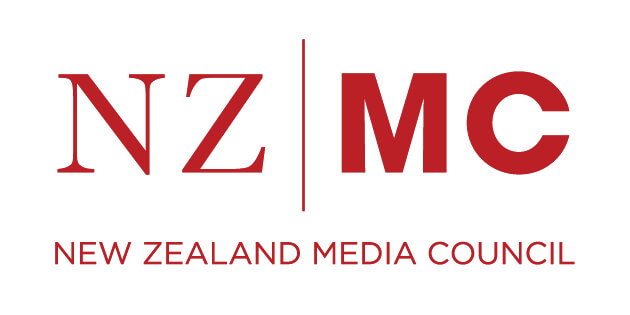JAMES POWERS AGAINST NEW ZEALAND HERALD
Case Number: 2742
Council Meeting: DECEMBER 2018
Decision: Upheld
Publication: New Zealand Herald
Ruling Categories:
Accuracy
Balance, Lack Of
Comment and Fact
Headlines and Captions
Unfair Coverage
Overview
Complaint that an article and video footage showing cyclists riding on a winding Auckland rural roadpublished by theHerald was inaccurate, unfair, unbalanced and also breached Media Council principles relating to comment and fact, headlines and captions.
Background
On October 23, 2018 the New Zealand Herald ran an article headlined “Dangerous dickheads”: Cyclists caught crossing centre line, taking up whole roads.
The item was illustrated with stills and dash-cam video taken from a car following a group of cyclists on a narrow, winding rural road.The article quoted a passenger in the vehicle. It also repeated comment made earlier that month by a driver held up by cyclists riding two abreast on a similar rural road.
The passenger was quoted as describing the cyclists as “dangerous dickheads” and “ignorant a**holes” who hogged the road by riding four- abreast (rather than single file) which made it impossible for her vehicle to pass safely, and forcing it to travel behind the group for a few minutes at less than 30km/h.
The Complaint
James Powers complained the article was anti-cyclist and “plumbed new depths in aggression, non-facts, supercilious attitude and gutter journalism.”
The article did not justify the claim that the cyclists had put other road users at risk. If anything they had made it clear to the driver of the car behind that it was not safe to overtake. This was a narrow road with blind bends and it would have been unsafe for a vehicle to have attempted to pass a line of single-file cyclists.
Drivers were regularly delayed by traffic lights, queuing traffic and road works etc. and none of this justified aggressive or threatening behaviour including the comment, made in this article, that cyclists were the first to moan when vehicles got a bit close to overtaking them.
Eighteen cyclists were killed and 556 were injured on the roads in 2017.
“In the light of this I don’t believe that close passes are justified and the Herald appears to be promoting this life-threatening behaviour.”
He estimated the vehicle would have been held up for just one minute. The article gave this incident disproportionate attention and the headline was designed to be sensational or clickbait. The article targeted vulnerable road users and constituted incitement. It had generated threatening and aggressive comment.
The Response
Herald senior newsroom editor Oskar Alley said the article was straight forward and canvassed the passenger’s frustration at being stuck behind the cyclists. The passenger did not display any aggressive, threatening behaviour towards the cyclists in the video - other than to state “They think they own the road.”
The item did not indicate unsafe behaviour by the vehicle’s driver and did not promote “close passes.”
The passenger was clearly frustrated by the cyclists’ behaviour and was entitled to make criticism. In terms of accuracy the video showed cyclists illegally riding four and five-abreast and some came close to crossing the painted white centre line.
As for balance the reporter contacted local cycling groups, both before and after the article was published, asking if they recognised the cyclists involved. They did not so it was not possible to obtain the riders’ response. However, the video served to verify reporting of the cyclists’ conduct, said Mr Alley.
The article did not promote life-threatening behaviour and the passenger had not made threats, implicit or otherwise. Her opinion was that the cyclists’ actions were inconsiderate and that it was their actions that risked the safety of others.
The Discussion
There were numerous grounds on which this story was challenged.
As to whether it was accurate, the video clearly showed cyclists riding in a group and taking up the road in a manner which prevented cars from attempting to pass on this narrow road.
It was stated the cyclists were riding four abreast, but the dash-cam footage showed the passing activity of one of the riders led to them being four abreast.
The footage showed only one cyclist (rather than a number of them) briefly crossing the centre line and apart from that the group remained on the left hand side of the road and did not take up the whole road as was stated in the story.
Were the cyclists riding dangerously? The passenger thought so and the paper was within its right to report her as saying so but there is nothing to indicate any attempt was made to balance the story.
The paper said its reporter tried to contact a local cycling group but only to ask if they recognised the cyclists involved.They did not so theHerald said it was not possible to get the riders’ response.This attempt at seeking balancing comment was not mentioned in the article. Nor was comment sought from the police or other cyclists who might have explained the footage from another viewpoint.
Readers were given no indication that the paper sought comment from anybody else. If anything it accentuated the sole viewpoint given by repeating another one-sided story about a similar incident earlier that month and effectively declaring it to be a matter of fact with an unattributed caption line reading:“Dangerous cyclists caught crossing centre line, taking up whole rural roads.”
On these ground the Media Council has found the article was in breach of principle 1 (accuracy, fairness and balance).
Media Council members considering the complaint were Sir John Hansen, Jo Cribb, Chris Darlow, Tiumalu Peter Fa’afiu, Jenny Farrell, Hank Schouten, Marie Shroff, Christina Tay and Tim Watkin.
